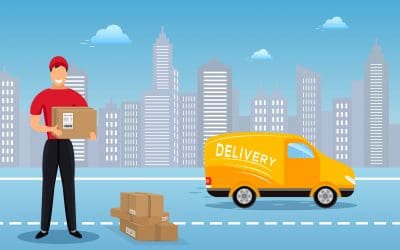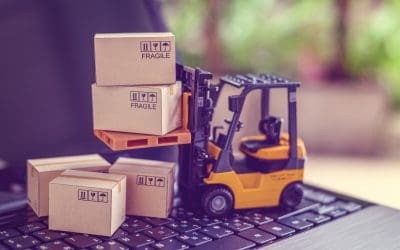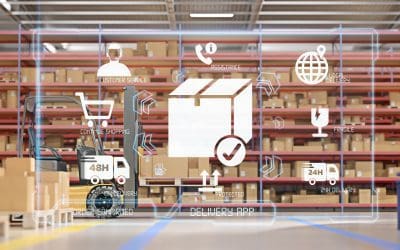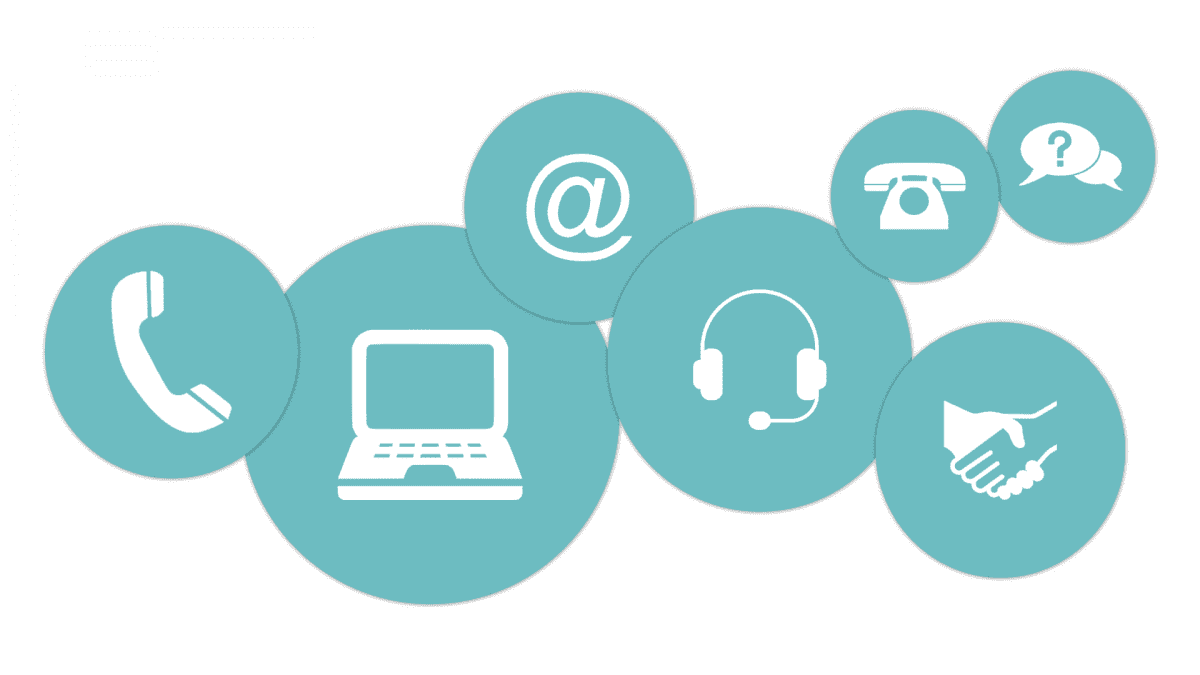
Logistics optimization is a phrase often tossed around in eCommerce spaces, yet it’s rarely defined or explained. Too often, it’s assumed that everyone already understands what it means. This leaves those who don’t feeling confused and frustrated.
We want to break that cycle. In this blog, we’ll explain exactly what logistics optimization means and how it affects your business.
Then, we’ll break down the four main components of logistics optimization so you can understand what it encompasses. We’ll also provide a step-by-step guide to implementing the proper logistics optimization process in your own business.
Let’s get started. Explore this article’s key sections quickly using the table of contents below.
- Defining Key Logistics Terms
- What is Logistics Optimization?
- Top 4 Components of Logistics Optimization
- Practical Steps to Optimize Your Logistics
Important Terms Defined
First things first—let’s define some key terms:
- Supply Chain: The entire process of procuring, manufacturing, storing, moving, and delivering products—from sourcing raw materials to returns management.
- Logistics: The part of the supply chain concerned with moving and storing goods, from planning to delivery.
- Last-Mile Logistics: Also called last-mile delivery, this is the final step in the delivery process, starting at the delivery hub and ending at the customer’s doorstep.
- 3PL (Third-Party Logistics): When a company outsources its logistics process to an external provider.
- 4PL (Fourth-Party Logistics): When a company outsources the entire supply chain management process to another company.
- Logistics Management Software: Software solutions designed to assist businesses with their logistics processes.
- Predictive/Prescriptive Analytics: Software designed to analyze historical data to predict future needs, trends, and behaviors, and/or suggest future actions in response.
With these foundational and ancillary terms defined, understanding logistics optimization becomes much easier.
What Is Logistics Optimization?
Logistics optimization is the process of streamlining and improving every step in the logistics process to maximize efficiency. It’s a vital part of a broader supply chain management strategy. Last-mile delivery is often a major focus, as it’s the most expensive part of the logistics process.
Logistics management software can be an integral tool in logistics optimization. Data analytics—including predictive and prescriptive analytics—also plays a key role in understanding and improving logistics performance.
Why Should You Care?
We get it—you’re a busy professional with no time to waste. So let’s cut to the chase: why should you care about logistics optimization?
Optimizing your supply chain, especially logistics (which includes the most expensive step in the process), leads to significant gains and benefits for businesses.
Here are some compelling statistics that support the value of logistics optimization:
Logistics Optimization Stats and Facts
- Effective supply chain optimization can reduce inventory costs by up to 30%.
- Order fulfillment cycles can improve by 50%.
- Forecasting accuracy can increase by up to 40%.
- Walmart reduced inventory costs by 10%.
- Johnson & Johnson reduced transportation costs by 15% and achieved a 99.8% on-time delivery rate for their most time-sensitive products.
- Research suggests that implementing advanced technologies like Artificial Intelligence (AI), Machine Learning (ML), and Internet of Things (IoT) devices is the future of logistics, offering substantial competitive advantages.
Bottom line: You can’t afford not to implement logistics optimization practices.
Top 4 Components of Logistics Optimization
Now that you understand the importance of logistics optimization, let’s dive into its core components. These are the four foundational elements that make up a successful logistics optimization strategy:
Route Optimization
Route optimization involves making delivery routes more efficient to save time and money. Implementing the right route optimization software can reduce costs by up to 19%. These savings come from reduced fuel consumption, improved productivity and delivery accuracy, and lower maintenance, operational, and legal costs.
The benefits aren’t limited to cost savings. Route optimization also enhances the customer experience, leading to higher satisfaction, increased loyalty, and greater revenue.

Inventory Management
Investopedia defines inventory management as the “process of ordering, storing, using, and selling a company’s inventory.” This includes all materials and components used to produce finished products. Managing these goods is complex and can easily go wrong if not handled properly.
Striking the right balance between too much and too little inventory is crucial. Excess inventory inflates warehousing costs, while insufficient inventory drives customers to competitors.
Here are four common inventory management strategies, each with its own pros and cons:
Inventory Management Tactics
- Just-in-Time (JIT) Management: Maintains only what’s needed for a specific timeframe to cut costs. While it can lead to significant savings, demand spikes can cause bottlenecks and delays.
- Materials Requirement Planning (MRP): Uses sales forecasting data to determine inventory levels. This strategy is effective but depends on highly accurate forecasting.
- Economic Order Quantity (EOQ): Orders inventory in batches based on consistent consumer demand. It minimizes costs when demand is stable but falters with significant demand changes.
- Days Sales of Inventory (DSI): Bases orders on the average time it takes to sell stock. Like EOQ, it relies on consistency and can lead to stockouts during demand fluctuations.
Each company must evaluate these strategies to determine the best fit.
Tracking/Visibility
There’s a common business saying: “What gets measured gets improved.” The same applies to logistics. When you can monitor every step, collect delivery data, and identify areas for improvement, you can streamline processes and accelerate delivery times.
Benefits of Tracking/Visibility:
- Save time and money by eliminating inefficiencies.
- Make dispatching and routing more efficient by identifying road conditions and delays, and working around them.
- Allow customers visibility into their deliveries, so they can check updates anytime without waiting for notifications.
- Provide faster deliveries and more accurate estimated times of arrival (ETAs).
- Gain customer trust through speed and transparency, leading to higher satisfaction and loyalty.
- Reduce asset theft and provide peace of mind.
Data Analytics and Forecasting
They say history never repeats, but it often rhymes. You’ll never have a holiday season with identical sales to last year’s, but seasonal shopping patterns persist. Certain products become more desirable during specific months. Using data analytics to understand these trends helps with logistics planning, such as forecasting future buying patterns. This leads to more accurate retail fulfillment.
If you have real-time data analytics in place to monitor sales, you can adjust production as demand fluctuates. Data analytics isn’t limited to internal metrics either. By tracking customer behavior, preferences, and market trends, you gain valuable insights into what customers want and when—allowing you to deliver it right on time.
Delivery analytics and business reports also help you refine your processes over time. Collecting customer data—such as past purchases, pages visited, and personal preferences—enables you to personalize content and recommendations. The more relevant your messaging, the higher the likelihood of conversion.
Data is knowledge, and knowledge is power.

Practical Steps to Optimize Your Logistics
We know how frustrating it is when an article explains why something is important but skips how to actually do it.
So here are the exact steps you can take to implement logistics optimization in a way that benefits your business:
1. Set Clear Goals
A paraphrased quote from Alice in Wonderland says, “If you don’t know where you’re going, any road will get you there.” This mantra is popular in business, productivity, and personal development—and for good reason.
Setting clear goals is essential for implementing and tracking any strategy. You can have multiple goals, but list and define each one. Examples include lowering logistics costs, minimizing delivery times, and improving customer satisfaction.
2. Gain a Clear Picture of Current Operations
Back to that quote: “What gets measured gets improved.” Before optimizing logistics, you need to identify areas that require improvement. Once you know which metrics are lagging and where inefficiencies exist, you can begin making targeted changes.
3. Decide What KPIs You’ll Use
The key performance indicators (KPIs) you track will shape the insights you gain. Often, multiple KPIs can be used to monitor a single optimization process.
Sometimes it makes sense to track several metrics; other times, focusing on the most relevant one is best. Choose KPIs that align with your business goals and logistics optimization strategy.
For example:
- If deliveries are frequently late or costly, track metrics like average delivery time, on-time delivery rate, and driver idle time.
- To reduce cost per delivery, monitor vehicle capacity usage to ensure trucks aren’t underfilled.
4. Perform a Delivery Time Analysis
Since logistics is ultimately about getting products to customers, delivery time deserves special attention. Analyze all metrics related to delivery efficiency and identify areas for improvement.
Pay extra attention to your last-mile delivery process—it’s the most expensive and challenging part of logistics and requires focused optimization.
5. See Your Business Through Your Customers’ Eyes
Customer-centric companies consistently outperform competitors. Why? Because they prioritize what customers want and need over internal visions.
Gather customer feedback through surveys, reviews, and direct communication. Learn what you’re doing well, where you’re falling short, and what gaps exist in your services or the market. Then, act on that feedback. It’s simple: give people what they want.
6. Use All the Data Gathered to Start Optimizing
Map out every component of your logistics process. An optimized logistics flow should maximize efficiency at every step, creating a seamless and cost-effective system. As you implement your plan, you should move closer to this ideal state.
7. Bring Your Partners In on the Plan
Collaborate with all logistics partners—suppliers, distributors, 3PL providers, and 4PL/managed transportation providers. Sharing data and aligning strategies helps everyone work toward common goals more effectively.
How Elite EXTRA Enhances Logistics Optimization
Elite EXTRA offers innovative last-mile delivery and logistics software solutions tailored to businesses like yours. Our advanced route planning software helps optimize deliveries, while our real-time tracking solution enables full visibility—including a customer portal where users can check their order status anytime.
Even better, we don’t just offer out-of-the-box software. We work closely with clients to customize solutions to their needs and ensure seamless integration, avoiding data silos and inefficiencies.
If our solutions aren’t working as expected, our award-winning 24/7 customer support is here to help. We’ll make sure your issue is resolved.
Ready to optimize your logistics operations?
Reach out to Elite EXTRA today to get the logistics optimization solutions your business needs.
Sources
https://www.apu.apus.edu/area-of-study/business-and-management/resources/the-importance-of-supply-chain-management-in-logistics
https://www.forbes.com/councils/forbestechcouncil/2024/11/05/3pl-versus-4pl-choosing-the-right-logistics-partner-for-your-business
https://www.forbes.com/sites/katevitasek/2023/08/18/whats-the-difference-between-logistics-and-supply-chain-management-and-why-it-matters
https://careerfoundry.com/en/blog/data-analytics/predictive-vs-prescriptive-analytics
https://www.shopify.com/blog/benefits-of-supply-chain-management
https://www.numberanalytics.com/blog/streamlining-modern-logistics-supply-chain-optimization
https://www.researchgate.net/publication/382680310_Optimizing_supply_chain_and_logistics_management_A_review_of_modern_practices
https://www.investopedia.com/terms/i/inventory-management.asp
https://creately.com/guides/logistics-optimization/#7-stages-of-logistics-optimization
https://www.thedaily.coach/p/alice-in-wonderland







